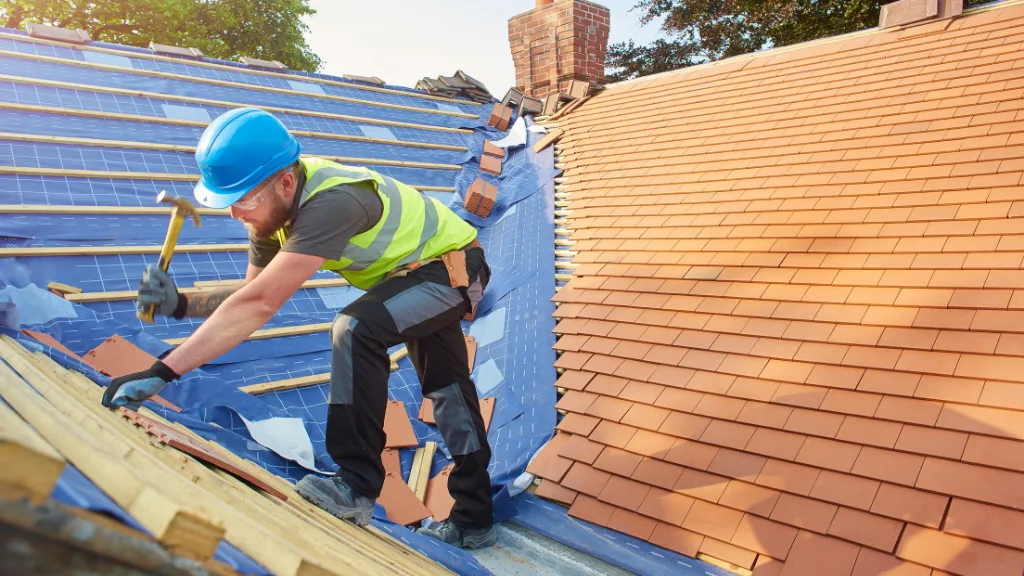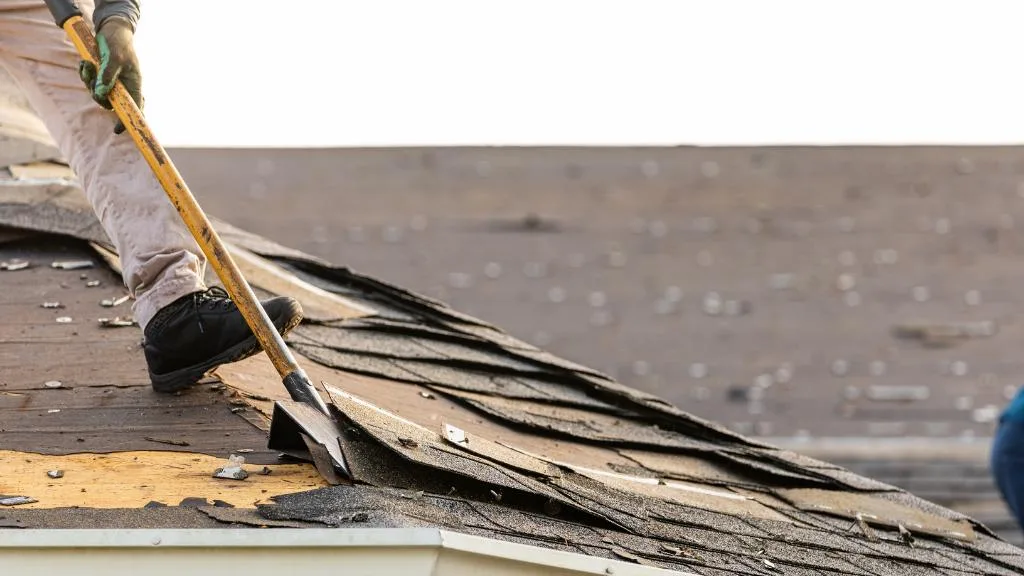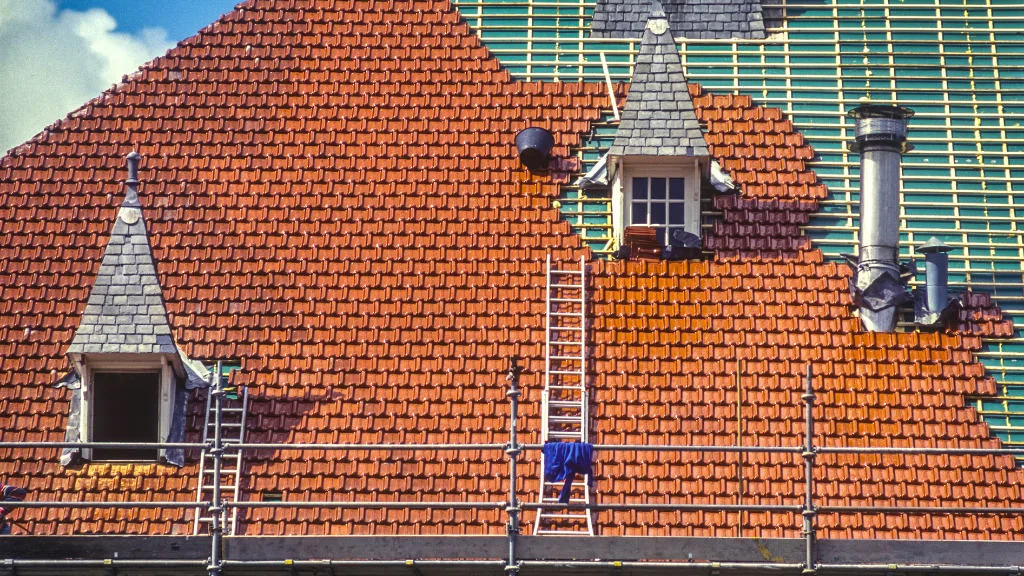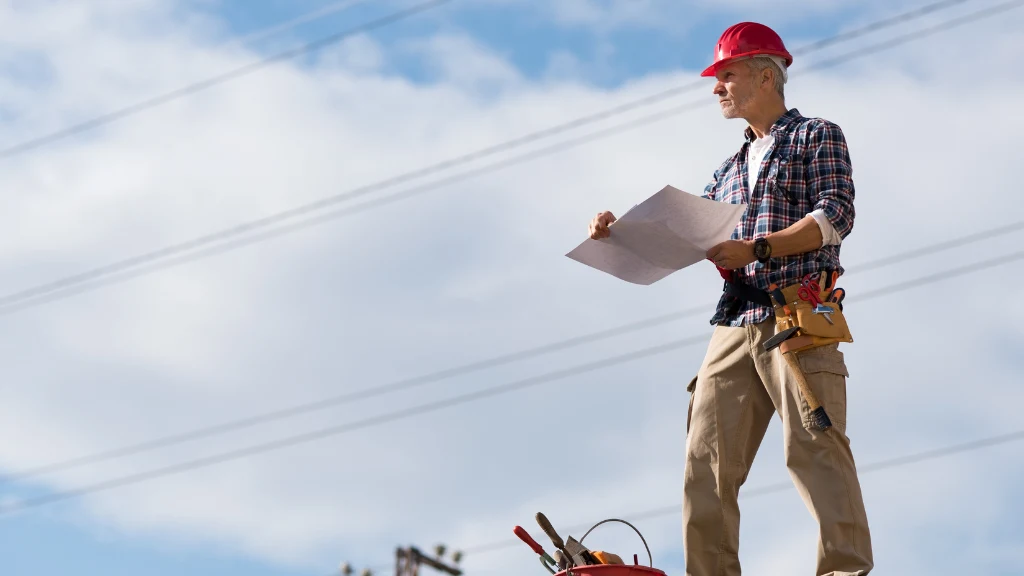
Replacing a roof can be a significant investment of time and money for any homeowner. If you’re planning a roofing project, you’re probably wondering how long it will take to complete.
The good news is that, on average, most roofing projects can be completed within a few days to a week. However, the exact timeline can vary depending on various factors such as the size of the roof, weather conditions, and the complexity of the project.
In this article, we’ll explore the average timeline for a roof replacement and the factors that can affect it. Whether you’re a homeowner preparing for a roofing project or a contractor looking to manage client expectations, our guide has got you covered.
So, let’s get started and learn more about how long it takes to replace a roof!
Factors Affecting the Time it Takes to Replace a Roof
Replacing a roof is a major home renovation project that requires careful planning and execution. The time it takes to replace a roof can vary depending on several factors that you need to consider before starting the project.
Here are some of the most important factors that can affect the time it takes to replace a roof:
Accessibility of Your Roof
The accessibility of your roof is a crucial factor that can affect the time it takes to replace it. If your roof is easy to access, the project will be faster and more straightforward.
However, if your roof is hard to reach, it will take longer to complete the project, and it may require additional equipment and labor. Factors that can affect the accessibility of your roof include its height, slope, and the presence of obstacles such as trees or power lines.
Roof Material
The type of material used for your roof can also affect the time it takes to replace it. Different materials require different installation techniques, and some materials are more time-consuming to install than others.
For example, asphalt shingles are generally quicker to install than clay tiles or slate. Metal roofs can take longer to install than asphalt shingles, but they are more durable and require less maintenance.
Roof Size
The size of your roof is another factor that can affect the time it takes to replace it. Larger roofs require more materials and labor, and they may also require more time to prepare and clean up.
If you have a large roof, you may need to hire a larger crew to complete the project within a reasonable timeframe.
Complexity of Roof Design
The complexity of your roof design can also affect the time it takes to replace it. If your roof has many angles, dormers, or other architectural features, it will require more time and attention to detail to replace it properly.
A simple, straightforward roof design will be faster and easier to replace than a complex one.
Weather Conditions
Weather conditions can also affect the time it takes to replace a roof. Rain, snow, or high winds can delay the project and make it more difficult to work safely.
Extreme temperatures can also affect the installation process, especially for materials like asphalt shingles, which require warm temperatures to seal properly.
In conclusion, several factors can affect the time it takes to replace a roof, including accessibility, roof material, size, complexity, and weather conditions.
By considering these factors carefully, you can plan your roof replacement project effectively and ensure that it is completed within a reasonable timeframe.

Average Time it Takes to Replace a Roof
Replacing a roof is a significant investment in your home, and it’s essential to understand how long it will take to complete the project. The time it takes to replace a roof varies depending on several factors, including the size of your home, the roofing material you choose, and the weather.
Here is an overview of the average time it takes to replace a roof for different materials.
Asphalt Shingle Roof
Asphalt shingle roofs are the most popular roofing material in the United States, and for a good reason. They are affordable, durable, and easy to install.
On average, it takes one to three days to replace an asphalt shingle roof. However, the time it takes to replace your roof may vary depending on the size of your home and the complexity of the project.
Metal Roof
Metal roofs are becoming increasingly popular due to their durability and energy efficiency. It takes an average of two to three days to replace a metal roof.
However, if you have a complex roof design or a larger home, it may take longer to complete the project.
Slate Tile Roof
Slate tile roofs are some of the most beautiful and durable roofing materials available. However, they are also one of the most expensive.
It takes an average of six to seven days to replace a slate tile roof. This is because slate tiles are heavy and require special installation techniques.
Concrete Tile Roof
Concrete tile roofs are a popular choice for homeowners who want a durable and long-lasting roof. It takes an average of eight to nine days to replace a concrete tile roof.
This is because concrete tiles are heavy and require special installation techniques.
Wood Shake Roof
Wood shake roofs are a popular choice for homeowners who want a natural and rustic look. It takes an average of six to eight days to replace a wood shake roof.
However, wood shake roofs require more maintenance than other roofing materials and may not be suitable for all climates.
In conclusion, the time it takes to replace a roof depends on several factors, including the roofing material you choose, the size of your home, and the complexity of the project.
By understanding the average time it takes to replace a roof for different materials, you can prepare yourself for the project and ensure that it is completed in a timely manner.

Process of Replacing a Roof
When it comes to replacing a roof, there are several steps that need to be taken to ensure a successful installation. The process typically involves a tear-off of the old roof, followed by the installation of the new roof.
Here is a breakdown of the process:
Tear Off
The first step in replacing a roof is to tear off the old roof. This involves removing all of the old shingles, underlayment, and other materials down to the roof deck.
The tear-off process can take anywhere from a few hours to a few days, depending on the size of the roof and the complexity of the job.
During the tear-off process, it is important to protect the surrounding areas of your home from debris. This can be done by placing tarps around the perimeter of your home and using a magnet to pick up any loose nails or other debris that may have fallen on the ground.
Installation Process
Once the old roof has been removed, the installation process can begin. This involves installing new underlayment, flashing, and shingles or other roofing materials.
The installation process can take anywhere from a few days to a few weeks, depending on the size of the roof and the complexity of the job.
During the installation process, it is important to ensure that the roof is properly ventilated to prevent moisture buildup and to ensure that the roof lasts as long as possible. This can be done by installing vents or other ventilation systems in the roof.
It is also important to ensure that the roof is properly sealed to prevent leaks and other issues. This can be done by using high-quality sealant and by ensuring that all of the shingles or other roofing materials are properly installed and secured.
In conclusion, replacing a roof can be a complex and time-consuming process, but it is necessary to ensure the safety and integrity of your home.
By following the proper steps and working with a professional roofing contractor, you can ensure that your new roof is installed properly and will last for many years to come.

DIY vs. Hiring a Professional
When it comes to replacing your roof, you have two options: do it yourself (DIY) or hire a professional. While DIY may seem like a cost-effective option, it’s important to consider the potential risks and benefits of each option before making a decision.
DIY
If you have experience with roofing or are confident in your abilities, DIY may be a viable option. However, keep in mind that replacing a roof can be a dangerous and physically demanding task that requires specialized tools and equipment.
Additionally, if you make a mistake during the installation process, it can lead to costly repairs or even a complete roof replacement.
Before attempting a DIY roof replacement, make sure you have the necessary skills, tools, and safety equipment. It’s also important to research the specific type of roofing material you plan to use and follow manufacturer instructions carefully.
Hiring a Professional
Hiring a professional roofing contractor may be more expensive than a DIY approach, but it comes with several benefits. Professional roofers have the skills, experience, and equipment necessary to complete the job safely and efficiently.
They also have access to high-quality materials and can provide a warranty for their work.
When hiring a professional, it’s important to do your research and choose a reputable contractor. Look for contractors with good reviews and a history of quality work. It’s also important to get multiple quotes and compare prices before making a decision.
In summary, while DIY may seem like a cost-effective option, it’s important to consider the potential risks and benefits of each option before making a decision. If you have the necessary skills and equipment, DIY may be a viable option.
However, if you’re unsure or inexperienced, hiring a professional roofing contractor may be the safer and more reliable choice.

Conclusion
In conclusion, the time it takes to replace a roof depends on several factors, such as the size of the house, the type of roofing material used, and the weather conditions. However, on average, a roof replacement can take anywhere from one to three days.
It is important to note that certain materials, such as metal roofing, may take longer to install, but can last significantly longer than other materials. Additionally, larger homes may require more time to replace the roof due to the increased surface area.
When planning a roof replacement, it is essential to work with a trusted and experienced roofing contractor who can provide an accurate estimate of the time it will take to complete the project.
They can also advise on the best materials to use for your specific needs and budget.
Overall, a roof replacement is a significant investment, but it is necessary to ensure the safety and comfort of your home.
By understanding the factors that influence the timeline for a roof replacement, you can make informed decisions and ensure a successful project.
